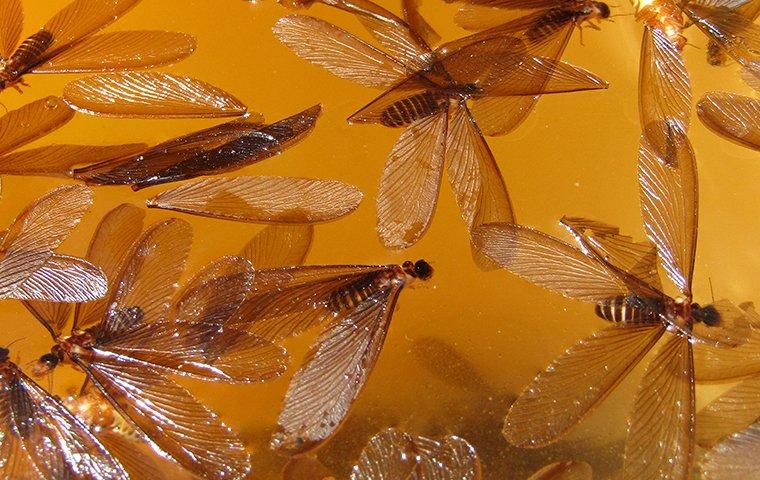Is Your South Bend Home Ready For The Return Of Termite Swarmers?
Every year it seems like clockwork that Joseph County, Indiana experiences swarms of flying termites. These termites are called “alates.” They are the adolescent form of future queen and king termites. They usually set out from established colonies in large swarms just before the rainy season. They fly out in anticipation of starting their own colonies. Most of them will be eaten by birds and bats and other insects like wasps and ants, but it only takes one pair of winged termites to start a colony. Termishield wants to know, is your South Bend home ready for the return of the termite swarmers?

When these alates, or winged termites, have paired up and mated, the first thing they’ll do is drop their wings. During this time of the year, it is important to be on the lookout for severed insect wings inside, or near the outside of your home. These wings are different than flying ants' wings in that they will all roughly be the same size. It’s important to know that distinction because termites, unlike ants, can cause severe property damage if they are not stopped.
If you see termite swarmers you can be sure there is a thriving colony nearby.
Spotting termite swarmers is a sure way to know termites are nearby. And even though it is important to be aware of that, termite swarmers are only one part of the greater potential threat to your South Bend home. Seeing termite swarmers might mean that your house or a nearby house is already experiencing structural damage from termites. So to be sure, here are some other ways you should know about how termites can gain access to your home. These are things you should watch out for:
Cracked Foundations
It is easy to see a cracked sidewalk or a cracked driveway. You might have noticed how a tree in your yard has pushed up the sidewalk and created cracks, but these types of cracks are not as easy to notice under the floorboards inside your house. If you have cracked sidewalks or patios outside, you likely have cracks under your house too. So if you noticed cracked foundations outside of your home, your home is probably vulnerable to infestations from subterraneous termites. This is because termites can, and often do, gain access to your house through unseen cracks in its foundation.
Water Damage
Homes that have experienced water damage in the past are especially susceptible to termite infestation. Termites need moisture. If you have experienced a flood, a broken pipe, or even a regularly overflowing bathtub or toilet, you’re at a greater risk for a termite infestation.
Secondary Access Points
Secondary access points can be raised flower beds against the side of your home. Or a stack of firewood leaned against the house. Or maybe a nearby decomposing tree stump is providing a foothold and staging area until termites can gain access to your house. These are all access points termites can use.
Noticing termite swarmers or their discarded wings is a good reminder to have a termite inspection done by our experienced professionals. Our home pest solution experts know all the signs and are ready to answer all of your questions.
We understand there are several things to look out for when making sure your South Bend home is ready for termite swarmers, but we also know that homes that show no signs at all can be infested with termites. Termites stay well hidden within the wood of a structure, and underground. So turn to the experts trusted by South Bend, Indiana. Call Termishield now and stop letting pests take over.
Tags: termites | termite control | pest prevention |
Request Your Free Inspection
Complete the form below to schedule your no obligation inspection.

